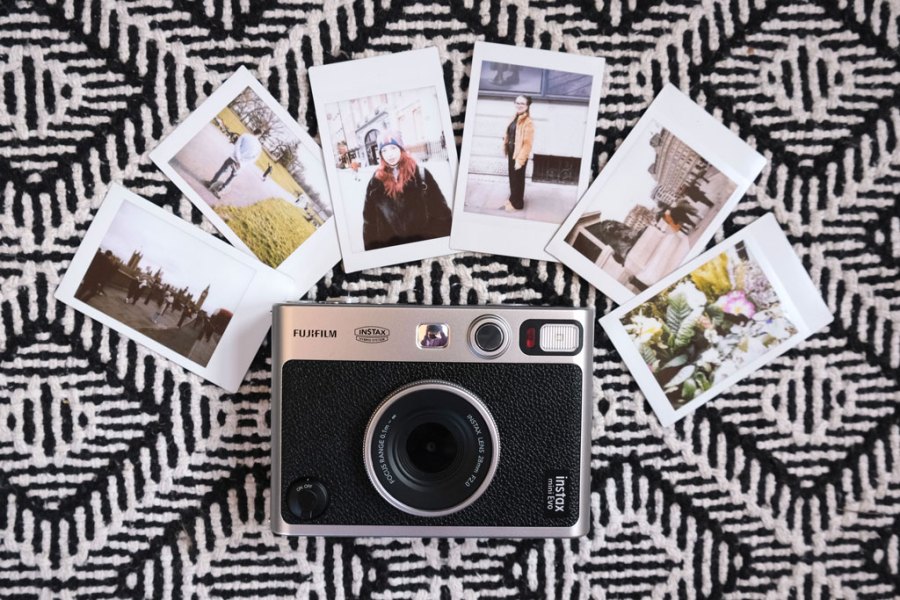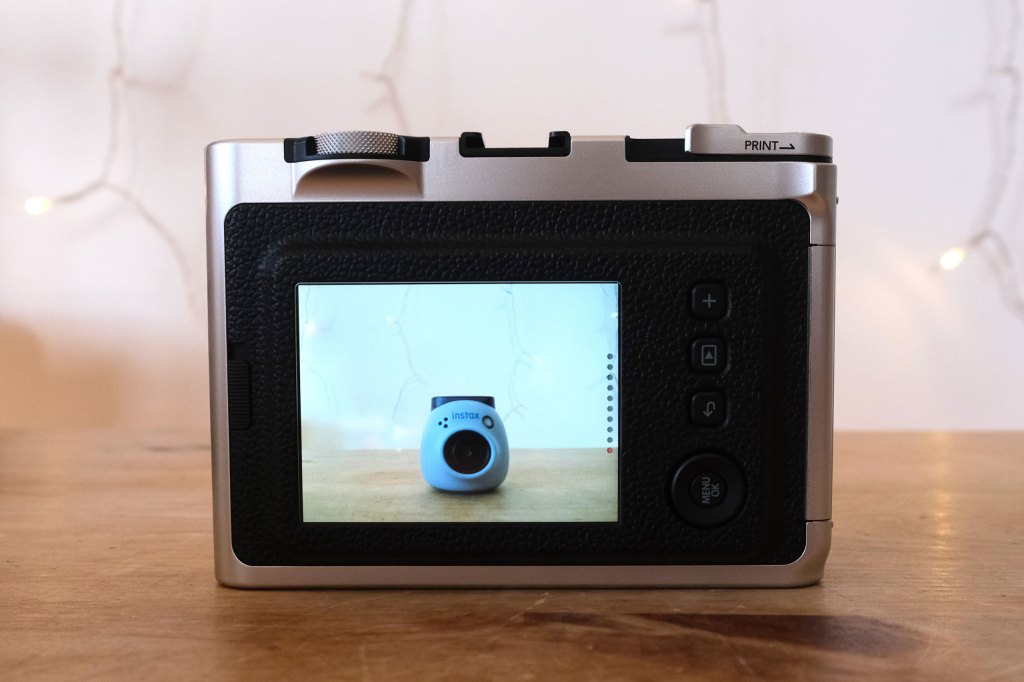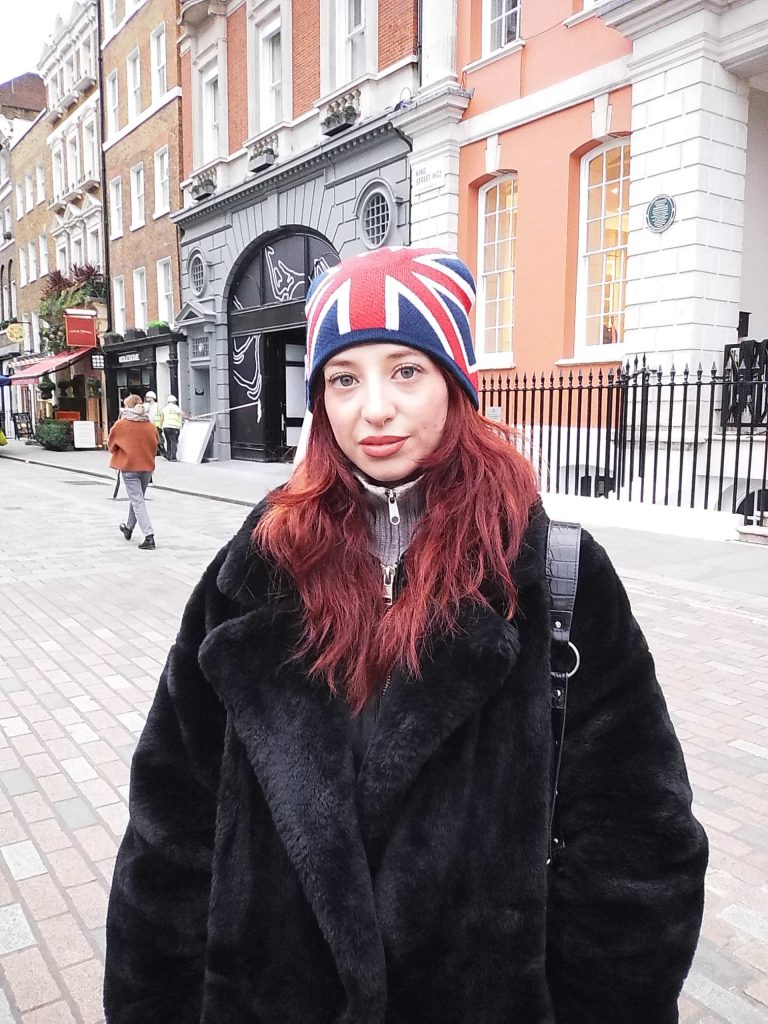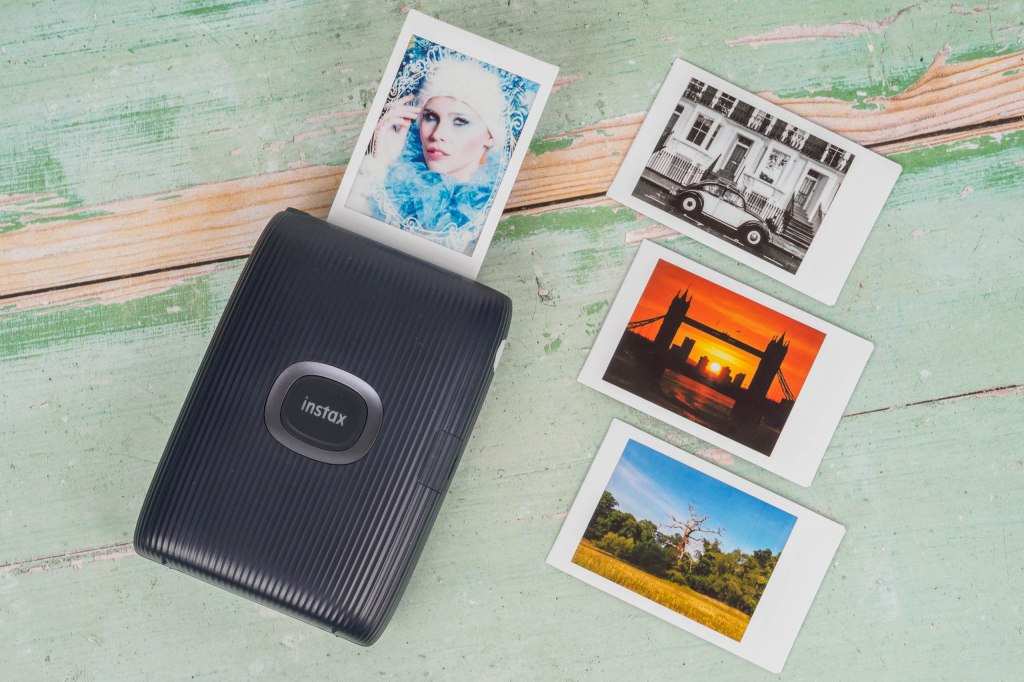Amateur Photographer verdict
This hybrid instant camera promises to deliver the best of both digital and film. It doesn’t succeed – but is halfway there. Great fun and scope for social snappers more than serious photographers.- You get to choose what you print
- Bluetooth connection and smartphone app
- Some fun effects
- 4.9MP sensor
- Can only send printed images to phone
- No video

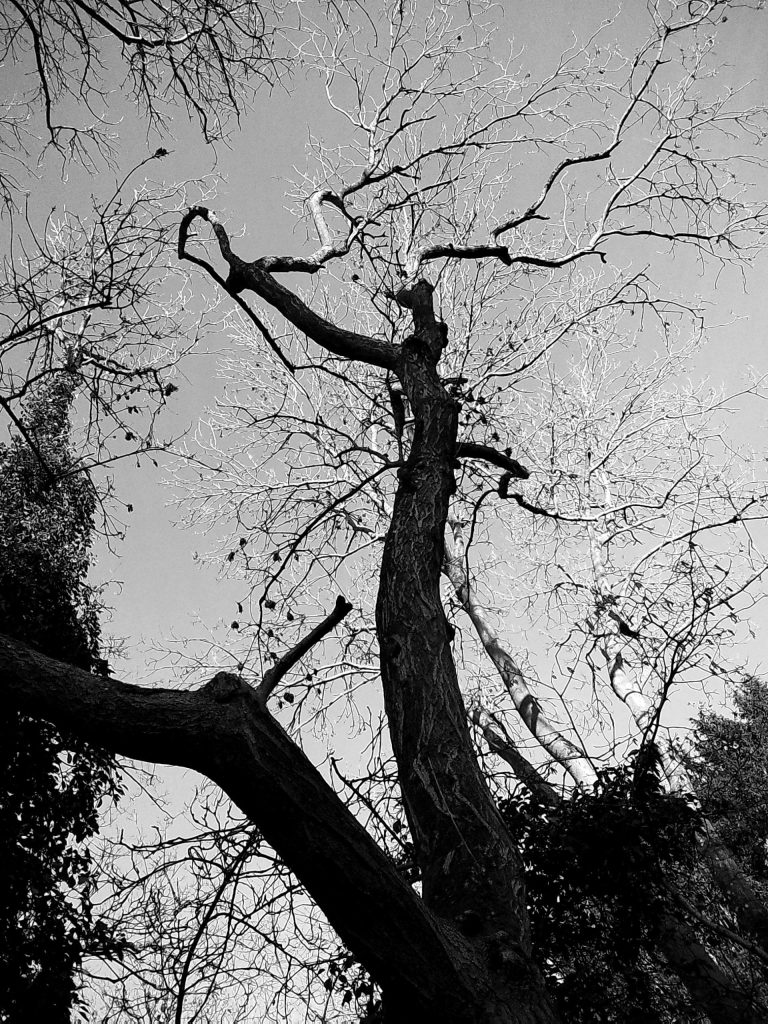
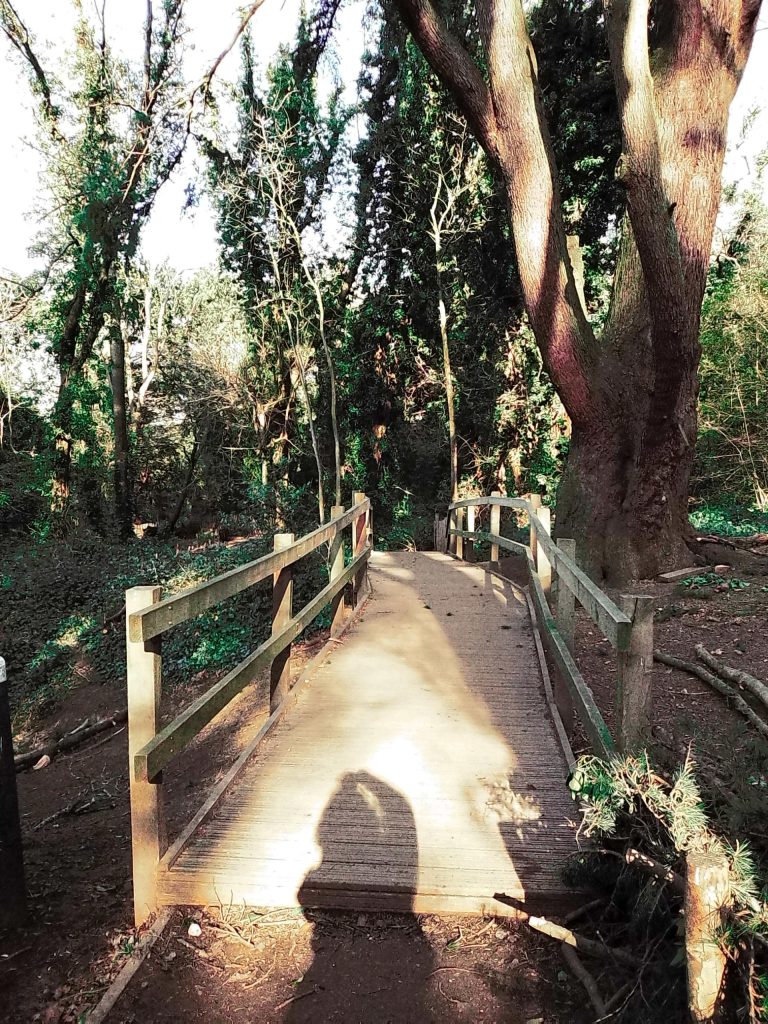



The much-hyped Instax Mini Evo hybrid instant camera camera was released back in 2021 and is Fujifilm’s second hybrid camera in its Instax range. You get digital images but can choose which to print. Unlike the newer and all-digital Instax Pal, the Mini Evo is both camera and printer. It looks like, as Hannah Montana would say, the best of both worlds. But is it? Isabella Ruffatti finds out.
Fujifilm Instax Mini Evo at a glance:
- 4.9MP camera
- Retro-styled body
- Takes digital images, with option to print them on Instax Mini film
- Price $199 / £174
- Instax.com
Camera body and design
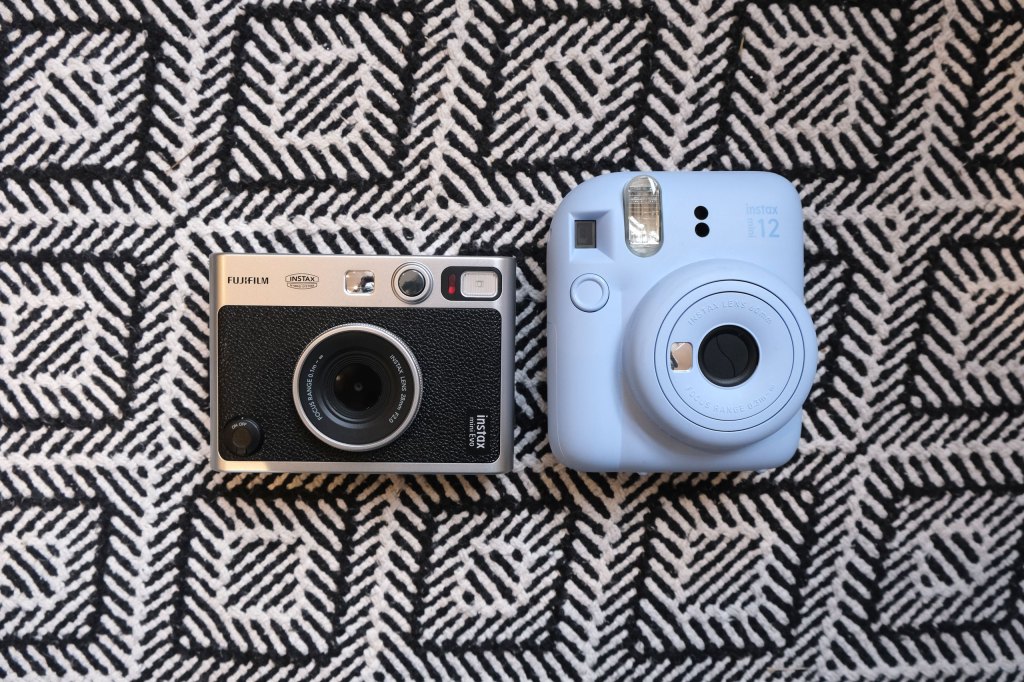
The Instax Mini Evo is similar in size to the Instax Mini cameras with a design that (the older black colour option in particular, which we got for this review) brings the Fujifilm Instax Mini 90 and Instax Mini 40 to mind, as well as Fujifilm X-series cameras like the Fujifilm X100V. There is a light brown colour option available too, released along with the Fujifilm Instax SQ40 in June 2023.
It’s got quite a lot of physical dials and buttons. The camera already has an in-built flash but another flash can be added on the accessory shoe on top of the camera, as well as LED lights, viewfinders and more. A manual print lever deliberately styled to look like a the wind-on lever in classic film cameras is on hand to print images.
There are two shutter buttons, one at the top of the camera just beside the print lever for when it is held in landscape orientation and the other on the front of the camera beside the flash and selfie mirror for when held vertically. The on and off ‘button’ is not a button but a switch on the front of the camera.
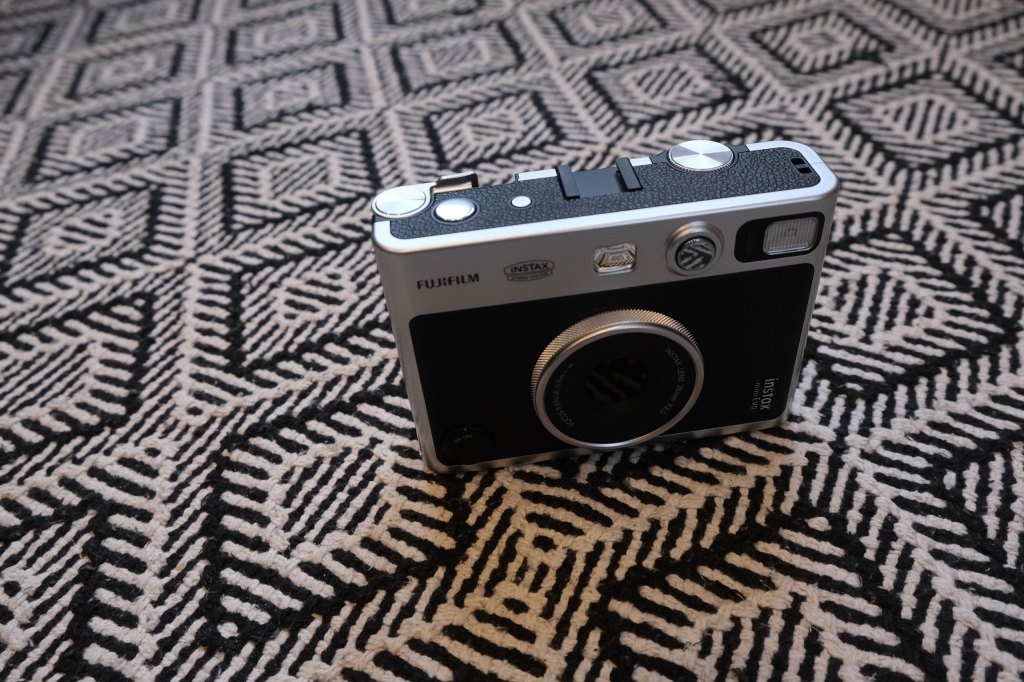
At the bottom of the camera, under a flap, is the microSD memory card slot and a USB-Type C port for charging (since the Mini Evo brown started being manufactured, new Mini Evo cameras have had this instead of the Micro USB Micro-B the original black Mini Evo cameras had). It also has a tripod screw mount on the side which many will find particularly useful for taking portraits and self-portraits.
The shooting experience
This almost feels like a proper camera – more so than the Fujifilm Instax Mini 12 and Instax SQ40, for example, which feature simplified features and camera controls. Once you take some time to learn the many controls of this camera, it’s very nice to use.
The Mini Evo has a 28mm wide-angle lens with a bright f/2.0 aperture. Though mostly automatic, featuring decent face detection and autofocus, the Mini Evo does give you some control over settings like flash, exposure, macro mode, white balance and a self-timer.
It did reasonably well in most situations. While it struggled in low-light, turning on the LED flash helped in most cases. I used Macro mode on some flowers but quickly found that this camera is not really one for capturing a lot of detail. Just enough to get a decent photo, sure, but that’s about it.
In my review of the Instax Pal, one of my main misgivings with the camera was image quality. The Instax Mini Evo unfortunately also has a small 4.9MP 1/5-inch CMOS sensor, which coupled with a small lens, doesn’t help matters.
You can zoom in to crop an image in-camera before printing but just because you can doesn’t mean you should. This is because this really is where you can see the drawbacks in image quality.
It probably won’t really be an issue if you’re just planning on printing your photos and posting them on social media, but it would be nice if it had a higher resolution sensor.
While the internal memory has capacity to store only around 45 images (which I completely filled up in just 1-2 days), Fujifilm says it stores around 850 images per 1GB memory card. I used a 32GB microSD memory card for this review, and it proved to be more than enough.
There are ten lenses available to choose from when rotating a dial around the camera’s lens that is similar to a manual focus ring. That includes half-frame, double exposure, fisheye and blur. Ten film settings, including Retro and Monochrome, can be mixed and matched with the lenses. All in all, the camera packs 100 effects in for photographers to play with.
Using most of the effects took me back to the early days of Instagram and had me cringing at suppressed memories of overediting every single one of my images to death; adding exaggeratedly blue or yellow filters to everything!
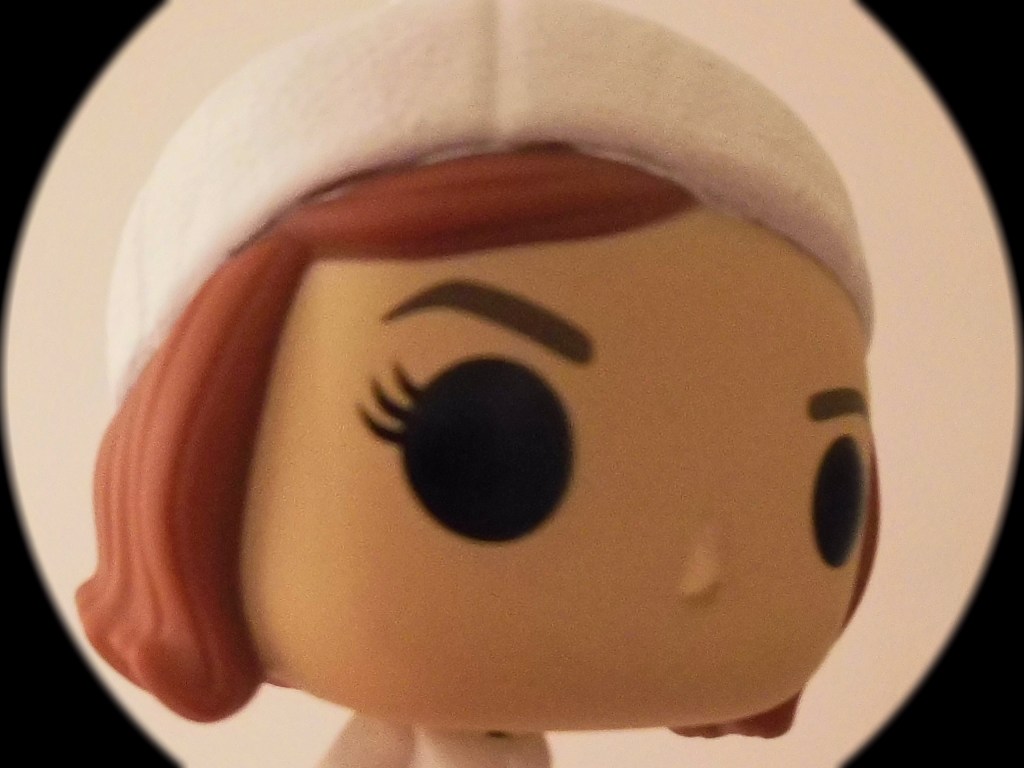
But it really comes down to personal preference. It’s worth noting that compared to other Instax cameras, Fujifilm really spoils you for choice for the types of images you can get out of your Instax Mini Evo. And I really enjoyed some, like the Retro filter as well as the double exposure, fisheye, and mirroring lenses.
Printing
You can choose which photos to print manually, by pulling the Print lever, or through Bluetooth on the Fujifilm Instax Mini Evo app. You can use it to shoot remotely too, as well as transfer images to your phone. You can only transfer ones you’ve printed though, which is annoying. There is no option to remove the white Instax Mini film frame either.
On the whole, it is a straightforward process, but you have fewer options than with the Instax Pal (which does allow you to transfer all images taken on the camera as well as print on Square/Wide film provided you have the appropriate printer to hand).
Value for money
The Mini Evo, priced at $199 / £174, is the second most expensive among the Fujifilm Instax instant camera line-up and printers. The Instax Wide Evo also a hybrid instant camera which takes wide-angle negatives sells for $/£319. In terms of looks and what it offers the Mini Evo is most comparable to the Instax Mini 90, which is cheaper but this is not taking any additional film costs into account.
The Instax Mini LiPlay is a hybrid camera and printer packs the same hardware as the Mini Evo but misses out on the retro styling and the quick access to the filters and effects. The Fujifilm Instax Pal is an all-digital camera shaped like a golf ball that connects to any of Instax’s Link printers to print photos. Depending on where you buy it, the Instax Pal can be more expensive than the Mini Evo, when bought as part of a bundle with a printer.
The main advantage the Instax Mini Evo has over all of the Fujifilm Instax film cameras really comes down to the ability to choose which photos to print. While you may spend more on the camera itself, the idea is to spend less on film while remaining free to keep taking pictures.
Additionally, the batteries are inside the camera and the only thing you really need to buy other than film when you want to print photos, is a memory card – but that is likely to be a one-off expense and not even a particularly expensive one.
The Fujifilm Instax printers also let you choose what photos you print but minus the image quality constraints (they allow you to print photos taken with your smartphone and digital camera). There’s also printers available for Square and Wide film, as well as Mini.
Verdict
So- does the Mini Evo provide the best of both worlds? Compared to printers, I’d say no. But it’s halfway there and it mainly depends on what kind of experience you want and how much image quality is a deciding factor for you.
As with the Kodak Ektar H35N, it’s possible this camera might not appeal hugely to professional photographers, but it is a fun camera for everyday shooting and travel photography. Photobooth enthusiasts, content creators, and beginner film photographers in particular will likely find much to love about the Instax Mini Evo.


